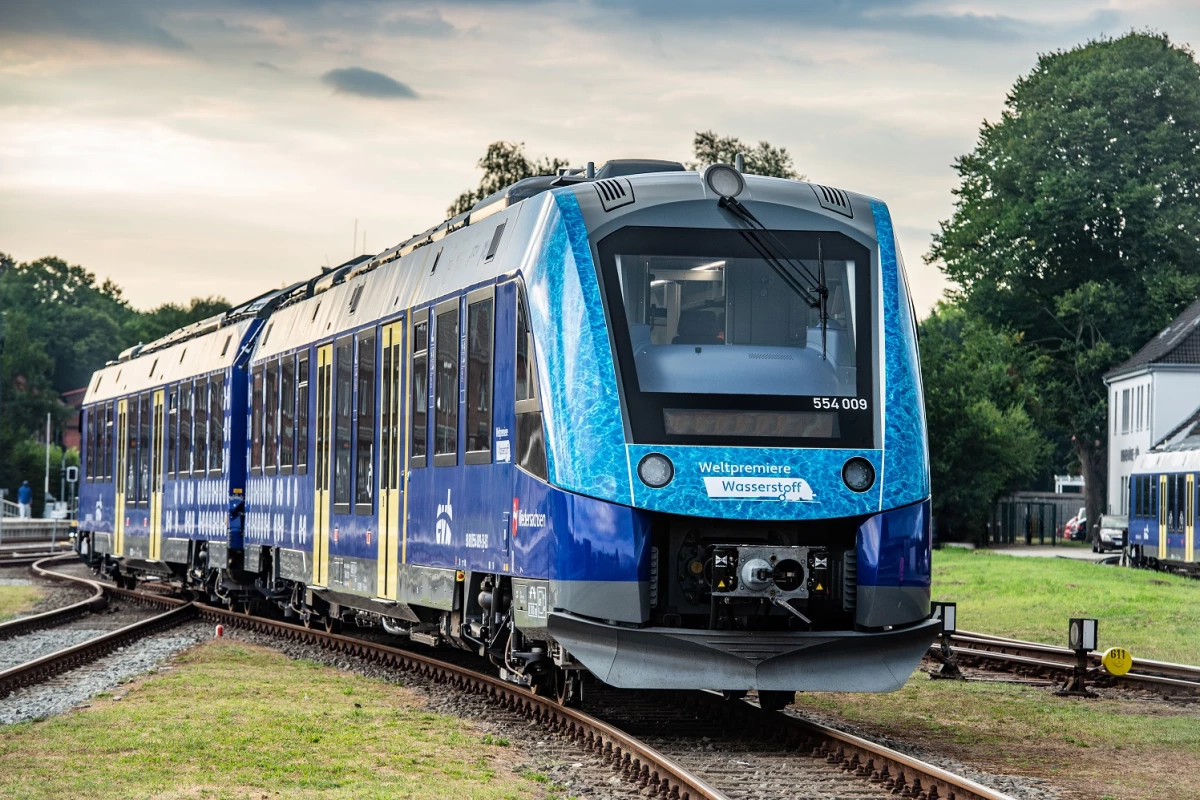Four years after embarking on a two-year operational trial run in Germany, a bunch of Coradia iLint hydrogen fuel-cell trains have entered passenger service along a 100% hydrogen route in Lower Saxony.
The passenger service trial, which began in September 2018 and ran for almost two years, involved the successful operation of two pre-series Coradia iLint hydrogen fuel-cell trains along an existing route operated by Eisenbahnen und Verkehrsbetriebe Elbe-Weser (EVB).
Now the project has officially entered public service, and expanded to 14 trains designed by Alstom engineers at the regional trains facility in Salzgitter, Germany, and the traction systems center in Tarbes, France. They were purchased by Lower Saxony Ministry of Transport and are owned by the state-run Landesnahverkehrsgesellschaft Niedersachsen mbH (LNVG) railway authority, which started looking for alternatives to diesel locomotives in 2012 and has committed to buying only non-diesel (hydrogen fuel cell or battery electric) trains from here on in.

Emitting only steam and condensed water, and with a range of 1,000 km (~620 miles), each train is expected to operate on a single tank of hydrogen for a full day's service along the route between Cuxhaven, Bremerhave, Bremervörde and Buxtehude. Travel speeds on the EVB network are reported to run between 80 and 120 km/h (50 - 74.5 mph), but the trains can get up to 140 km/h (87 mph).
They will each get daily top-ups at the Linde hydrogen filling station at Bremervörde, which is home to 64 high-pressure (500-bar) storage tanks, six compressors and two fuel pumps. Future plans call for hydrogen production on site via "electrolysis and regeneratively generated electricity."
Five of the Coradia iLints are currently in operation according to EVB, with the remainder expected to join the fleet by the end of 2022 – replacing 15 diesel trains operating on the network, and saving an estimated 1.6 million liters of diesel and 4,400 tonnes of CO2 per year.

"This project is a worldwide role model," said Premier of Lower Saxony, Stephan Weil. "It is an excellent example of a successful transformation Made in Lower Saxony. As a state of renewable energies, we are setting a milestone on the path to climate neutrality in the transport sector."
Alstom's hydrogen-powered train plans aren't stopping with Lower Saxony, the company has also been contracted to supply 27 Coradia iLint hydrogen fuel-cell trains to the Frankfurt metropolitan area, as well as six Coradia Stream hydrogen trains for the Lombardy region in Italy, and a dozen Coradia Polyvant hydrogen trains for different regions in France. The company has been running operational trials in Poland, the Netherlands, Sweden and Austria as well.
Source: Alstom









